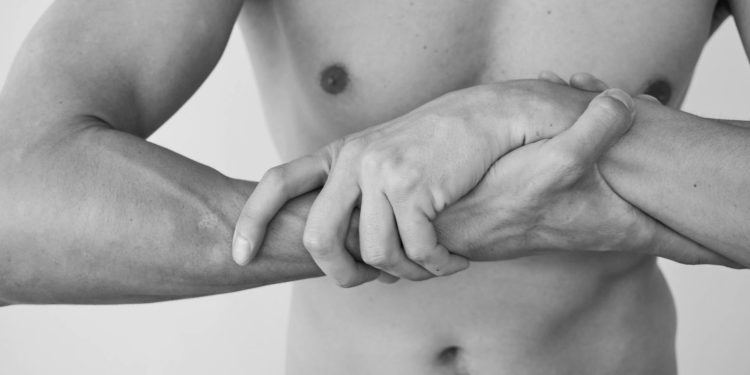People today are suffering from mental and physical exhaustion all the time. One common problem cutting across different ages is muscle tightness. It is due to sitting for long hours, stress, poor posture, excessive use, and chronically tight muscles resulting in discomfort and pain along with limited mobility.
If not addressed, the tightness may lead to even severe conditions like pinched nerves or chronic pain conditions. Knowing the causes of chronically tight muscles and an effective solution can be necessary for a healthy and active life.
What Causes Chronically Tight Muscles?
Before discussing how to loosen up tight muscles, it's good to understand why they happen. Tight muscles, most of the tim,e are caused by one or more of the following factors:
Overuse or Strain
Repetitive movements or overexertion during physical activity can strain muscles, causing them to be tight.
Tension and Panic
The muscles have these factors that make them even stiffer, especially in areas such as the neck, shoulders, and even the back.
Poor Posture
Sitting may make one suffer from stiffness due to the tendency of some muscles to overstretch while other ones weaken.
Dehydration
Good hydration is vital for muscle function; cramps and stiffness go hand in hand with dehydration.
Sedentary Lifestyle
Inactivity over time decreases blood flow to the muscles, causing them to stiffen.
Inadequate Warm-Up or Cool-Down
Stretching before or after exercise results in muscle imbalances and tightness.
Symptoms of Chronically Tight Muscles
Such findings can be signs of chronic tight stretched muscles, depending on causality but often involve:
- Chronic pain or suffering.
- A feeling of tightness that limits your range of motion.
- Muscle weakness or fatigue after minimal exercise.
- Pain that worsens with protracted sitting or standing.
- Sudden muscle spasms or cramps.
How to Release Chronically Tight Muscles
The release of chronically tight muscles involves self-care techniques, lifestyle changes, and professional treatments. Some of the strategies to be considered are:
1. Stretched Exercise
Stretching is one of the most effective ways to relieve muscle tightness and promote flexibility. Be sure to:
Dynamic Stretching: These are best done before exercise. They involve controlled arm circles, leg swings, and other muscle preparations.
Static Stretching: Static stretches are holding end positions, such as touching toes or a seated forward bend, for 20-30 seconds to lengthen the muscle after exercise.
Specific Neck Stretches:
- Extension and Flexion: Move your chin to the sky, then down toward your chest.
- Lateral flexion: One ear approaches the shoulder opposite.
- Rotation: Slowly roll your head from side to side.
2. Message Therapy
Massaging tense muscles increases blood flow and decreases tension. Some of these are:
Self-Massage: Using a foam roller or massage ball and applying pressure to sore areas is a self-massage.
Professional Massage: A licensed therapist pinpoints areas of distress and relief is found in the long term.
3. Heat and Cold Therapy
Heat Therapy: The heating pad or warm bath is best for relieving muscle spasms and aiding blood flow, especially when tightness is chronic.
Cold Therapy: Apply an ice pack to reduce inflammation and numb acute pain. This is most effective right at the time of injury or after maximal exercise.
4. Sufficient Physical Activity
Exercise improves circulation and reduces the feeling of stiffness. Concentrate on exercises which promote balance and flexibility of muscles, such as:
Yoga: It contains stretches and poses to loosen the tension in various muscle groups.
Pilates: Pilates strengthens the core and improves posture, thereby reducing strain on other muscles.
Low-Impact Cardio: Pure Walking or Swimming activates and engages the muscle without causing damage.
Importance of Proper Hydration and Nutrition
Dehydration is very necessary and key to alleviate muscle soreness and cramps. Lack of water causes spasming and tightening of muscles. To keep muscles functioning optimally:
- Make sure to drink plenty of water. Water should be drunk throughout the day, especially slowly while working out and after that.
- Make sure that you have little dosages of magnesium in your diet. This can be taken using supplements or by having magnesium rich-foods such as spinach, almonds, and bananas in your diet.
- Ensure adequate protein intake to aid muscle recovery and repair.
When to Seek Professional Aid
While most muscle tightness conditions are commonly managed at home, severe and chronic tightness may require medical attention. See a healthcare professional if:
- Reassuringly, muscle spasm persists despite self-care.
- You feel radiating pain or numbness, which a pinched nerve may cause.
- Swelling, redness, or warmth may be noticed in the affected area. Such states signify infection or injury.
What Does A Physical Therapist Do?
A physical therapist or chiropractor can provide tailored treatments such as:
- Trigger Point Therapy: Focuses on specific tight knots in muscles.
- Myofascial release releases the connective tissue surrounding the muscles.
- Stretching and strengthening exercise programs improve muscle imbalances.
How To Prevent Muscular Tension?
Prevention is always better than cure. To prevent chronic muscle tightness:
- Keep good posture
- Sit and stand with your back straight and shoulders relaxed. Make use of ergonomic furniture where possible.
- Add movement interruption
- Get up every 30-60 minutes to stretch and walk around.
- Warm-ups and Cool-down sessions cannot be missed in the training routine.
- Stay active
- Regular exercise maintains muscles strong and flexible.
- Practice relaxation, such as deep breathing, meditation, or even doing some yoga to reduce tension.
Muscle Stiffness vs. Muscle Spasticity
Knowing how to distinguish among muscle stiffness, rigidity, and spasticity is crucial
- Muscle Stiffness: Is tight and sore; with mild discomfort usually relieved by exercise and rest.
- Muscle Spasticity: Repeated uncontrolled contraction of muscles often diagnosed to multiple sclerosis, cerebral palsy, or in muscular dystrophy. If you suspect spasticity, then seek a healthcare doctor for proper care.
Conclusion: Take Charge of Your Muscle Health
Chronically tight muscles can be quite annoying, but they can be well managed with constant care and attention. To maintain healthy muscles, release tension through the combination of stretching, massage, heat and cold therapy, and regular exercise. Persistent stiffness should not be ignored. It needs to be addressed early in life to avoid complications.
REMEMBER, there are muscles required in every activity one may go out and do. Treat these parts properly, and they will serve you well with flexibility and all-day strength, pain-free.

























